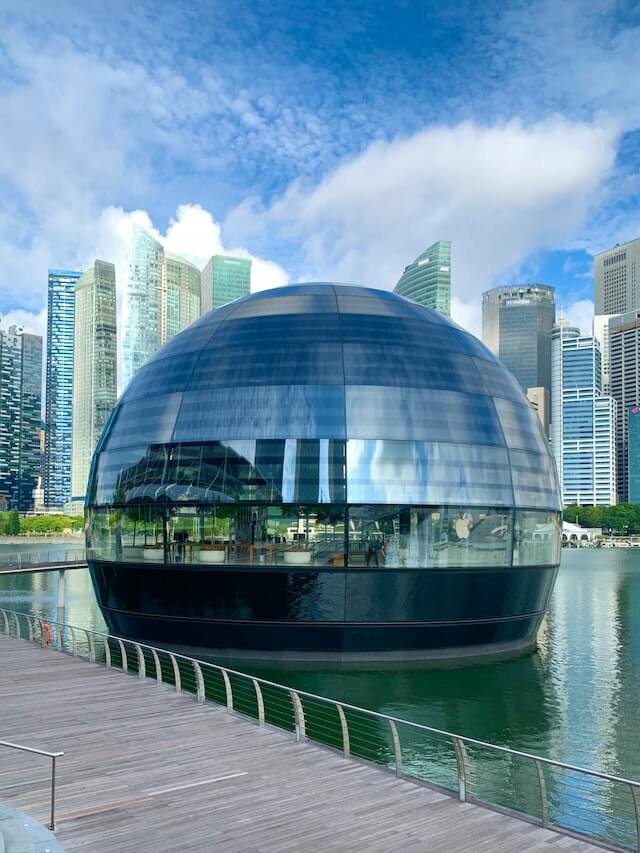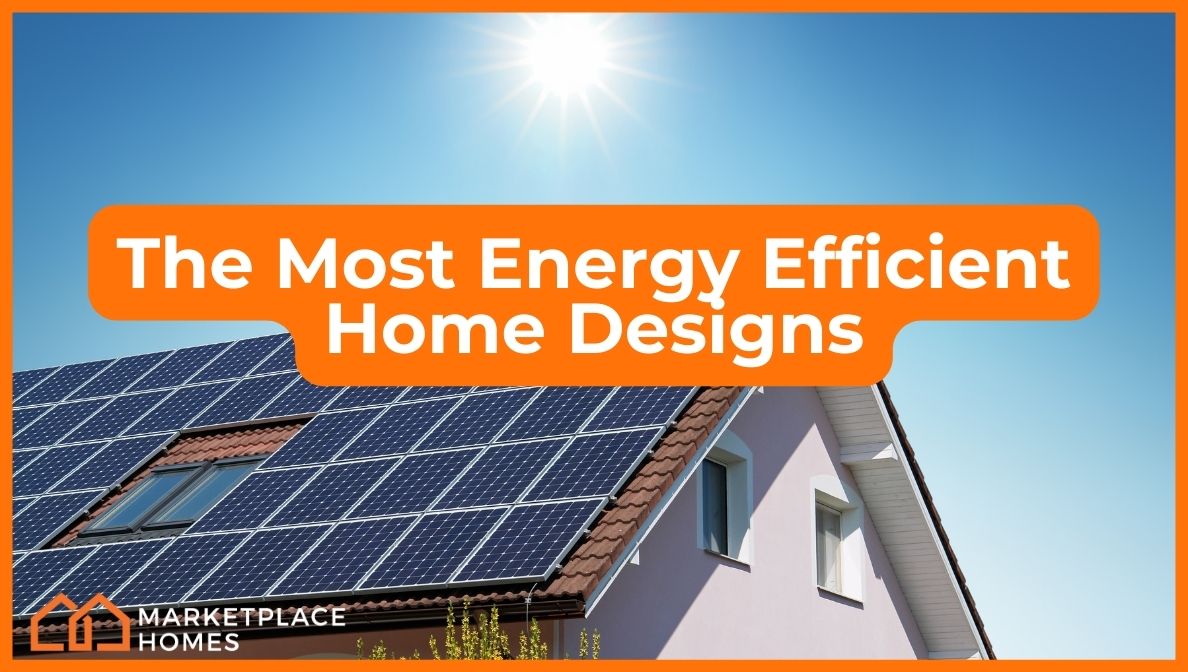The Most Energy Efficient Home Designs
With so much attention turned to the environment these days, energy-efficient home designs are on top of mind for builders and buyers alike. These designs benefit everyone, from industrial businesses to the everyday homeowner, for the cost savings associated with less wear and tear on buildings.
Energy-efficient house plans aren’t just good for the environment, but they are also friendlier on the wallet. Spending less when the utility bills come in increases everyone’s ability to save, budget, and invest their money in more efficient ways. So, what designs use less energy and how can you improve an existing home?
Energy Efficient House Designs
In the hierarchy of energy efficiency, it’s important to note that it’s not always practical for modern families to dwell in the most efficient types.
Overall, dome-shaped homes and tiny homes are the most energy efficient. Since dome-shaped houses can only be one story and not every household can function in a small space, it’s best to go with the best possible new home design without sacrificing functionality.
- Dome-shaped Homes
- Cube-shaped Homes
- Earth-sheltered Homes
- Single-level floor plans like ramblers and bungalows
- Passive solar home designs
- Houses with lower ceilings
- Homes with insulated exterior walls to prevent strain on its energy systems
- Homes that use advanced construction and Energy Star components
- Homes with advanced house framing
- Homes that have a whole house system approach
- Houses that use renewable energy sources, which net zero energy through solar and geothermal power, shades, and other sustainable methods that reduce or eliminate energy consumption.
The more watertight, wind-tight, and air sealing your house is, it will have less of an environmental impact. Eco-friendliness increases as you incorporate recyclable or reclaimed materials and use renewable energy like solar power, too.
There are even advanced, experimental designs that use wind tunnels to funnel fresh air from on top and through the building to provide natural, free cooling that eliminates the need for an HVAC system.
But remember, you don’t have to be extreme or spend thousands of dollars to make your home consume less energy. Even replacing a drafty door for $500 or applying some fresh caulking to some old windows can prevent air conditioning/heat loss and make an impact. LED lighting and efficient appliances can also help you use less energy at home.
1. Dome-Shaped Houses

Apple Marina Bay Sands Retail Location in Singapore – Photo by Spencer Battista
The natives of cold climates and deserts worldwide had it right: Small, dome-shaped dwellings were the best at locking in stable temperatures. Igloos can be, quite possibly, the most eco-friendly home because they are made of entirely renewable materials (ice) and formed into a dome that is easy to heat and keep warm.
Now, it’s understood that not everyone wants to or should live in an igloo, but the concept of a dome has been used to create eco-friendly dwellings for generations. It’s not just useful in the cold for preventing heat loss, but they are also seen in these cooling geodesic domes in the desert. A dome is an excellent design that suits the tiny home lifestyle and for anyone who wants to live a minimal lifestyle.
2. Cube-Shaped Homes
The second-most efficient home plan is in a shape most people are used to: a square. As green homes are on the rise, more builders are creating cube-shaped homes with low-slope roofs to ensure maximum use of heating and cooling systems.
They can even take this design one step further by turning it into a passive house that uses solar power and natural light to keep the house comfortable with minimal energy usage.
3. Earth-Sheltered Homes
Burying part of the house is another way people survived in extreme climates before air conditioning. This concept is still used today in environments that have extreme temperatures.
Earth-sheltered homes are surrounded by exterior walls made of soil that absorb heat in the summer and retains more heat indoors in the winter. Though they cost around 20% more to build, a custom-designed home in the ground can be an excellent green building and an instant conversation starter!
4. One-Floor Living
Given that there are temperature differentials between floors, maintaining the temperature of just one floor would use less energy. This high performance reduces the wear and tear on your heat pump. One-floor homes are more energy-efficient when they have fewer sq ft, air-tight windows and doors, and preferably new cool roof technology. Landscaping can also come into play if you plant trees that provide shade strategically to block direct sunlight during the hottest times of the day.
5. Lower Ceilings
While cathedral-height ceilings are certainly an incredible sight, extra space = more ground for your heating system to cover. You can decrease this impact by installing cool roofs or investing in excellent insulation. Still, the general rule is that home buildings with more room will require more energy to keep comfortable.
6. Homes with Energy-Saving Upgrades
If you have an existing home that is larger than 2,000 square feet or have high ceilings, there is still plenty to do to improve your home and gain energy savings. No matter its design, you can upgrade doors, windows, and insulation to keep as much conditioned air in your home as possible. There are also cheap DIY ways to repair older windows and doors, such as using peel-and-stick weather stripping or window tint film to block the sun’s heat. Here are some other ideas:
- Improve your duct system to eliminate air leaks.
- Install efficient faucet fixtures that use less water.
- Dual-flush toilets to reduce the use of water.
- Use energy-efficient lighting. Incorporate more natural light through skylights or large, Low-E windows.
- Trade LED lighting in place of incandescent
- Use recycled building materials in renovation projects.
- Install a programmable thermostat to reduce energy use during different times of the day or vacations.
- Install solar panels to supplement your energy needs.
- Use energy star appliances and building materials. Did you know that an Energy Star-certified house is at least 10% more energy-efficient than other houses built to code?
- Here are some energy star efficient appliances and products that can decrease home energy use, like a hot water heater, tankless water heater, efficient air conditioning system and furnace, rante, washer/dryer, and windows.
- Use shades, shutters, or grow a tree that provides shade to block heat in the summer.
Any renewable energy sources integrated into your home to power your appliances will also contribute further to long-term sustainability.
Keep It Simple
The overarching rule of energy efficiency is that more complicated home designs are more challenging to keep at a uniform temperature. Simple shapes, like one-floor rectangular ramblers and domes, are easier to keep comfortable compared to an irregularly shaped house with multiple floors and high ceilings.
More surface area also means more places to keep warm or cool in the harsher seasons. If you don’t need extra rooms in your new house, you can save on energy bills by opting for a smaller home. However, if you need space for your lifestyle, you can still take advantage of many countermeasures that help you save on energy costs.
Find Builders with Energy-Efficient Home Designs
Marketplace Homes has a variety of special incentive programs that make the transition to a new home as easy as possible. Our creative solutions like new construction commission discounts, Sell & Stay, Guaranteed Purchase, and Guaranteed Lease can resolve many worries on a buyer’s mind.
We also offer savings on commission when they select a new construction home with our builder partners. For more information, contact us today!


